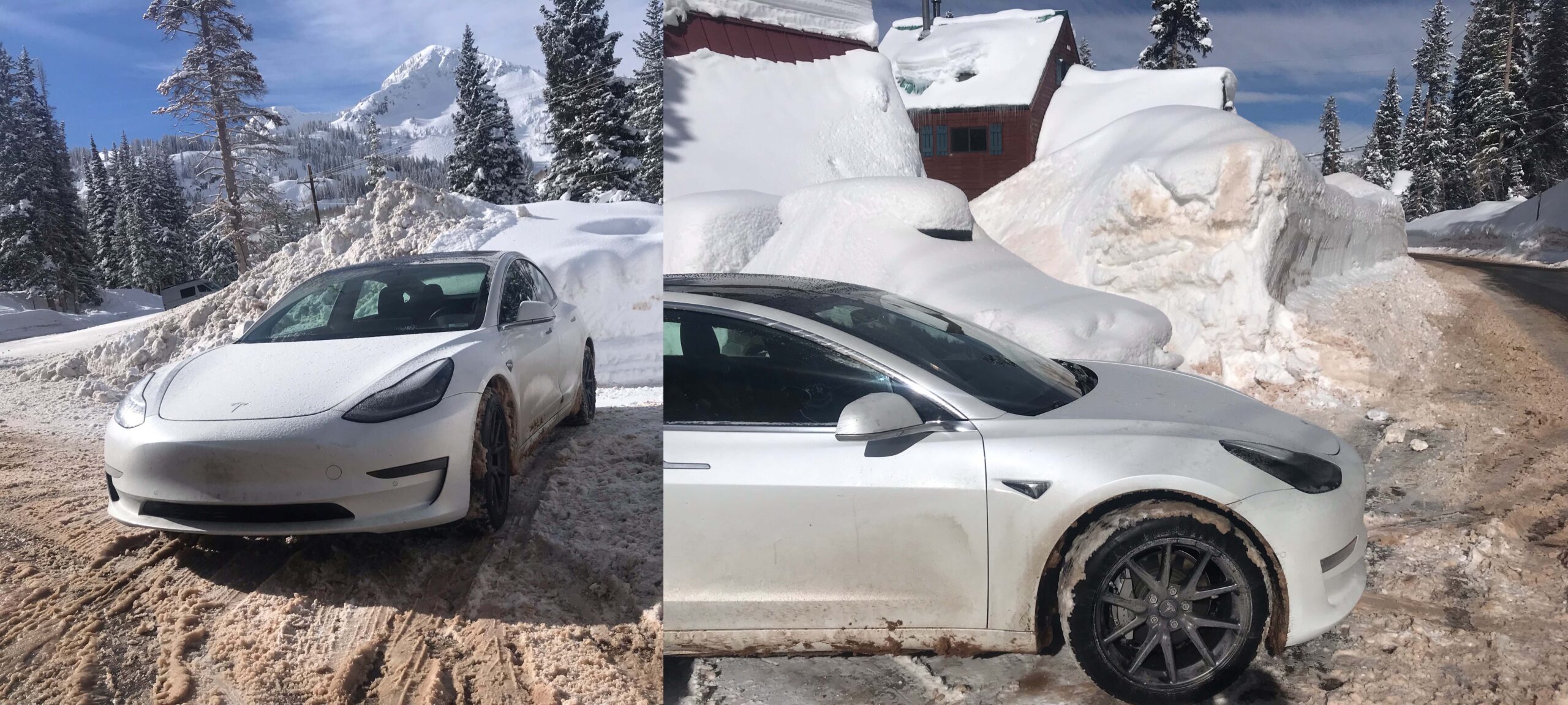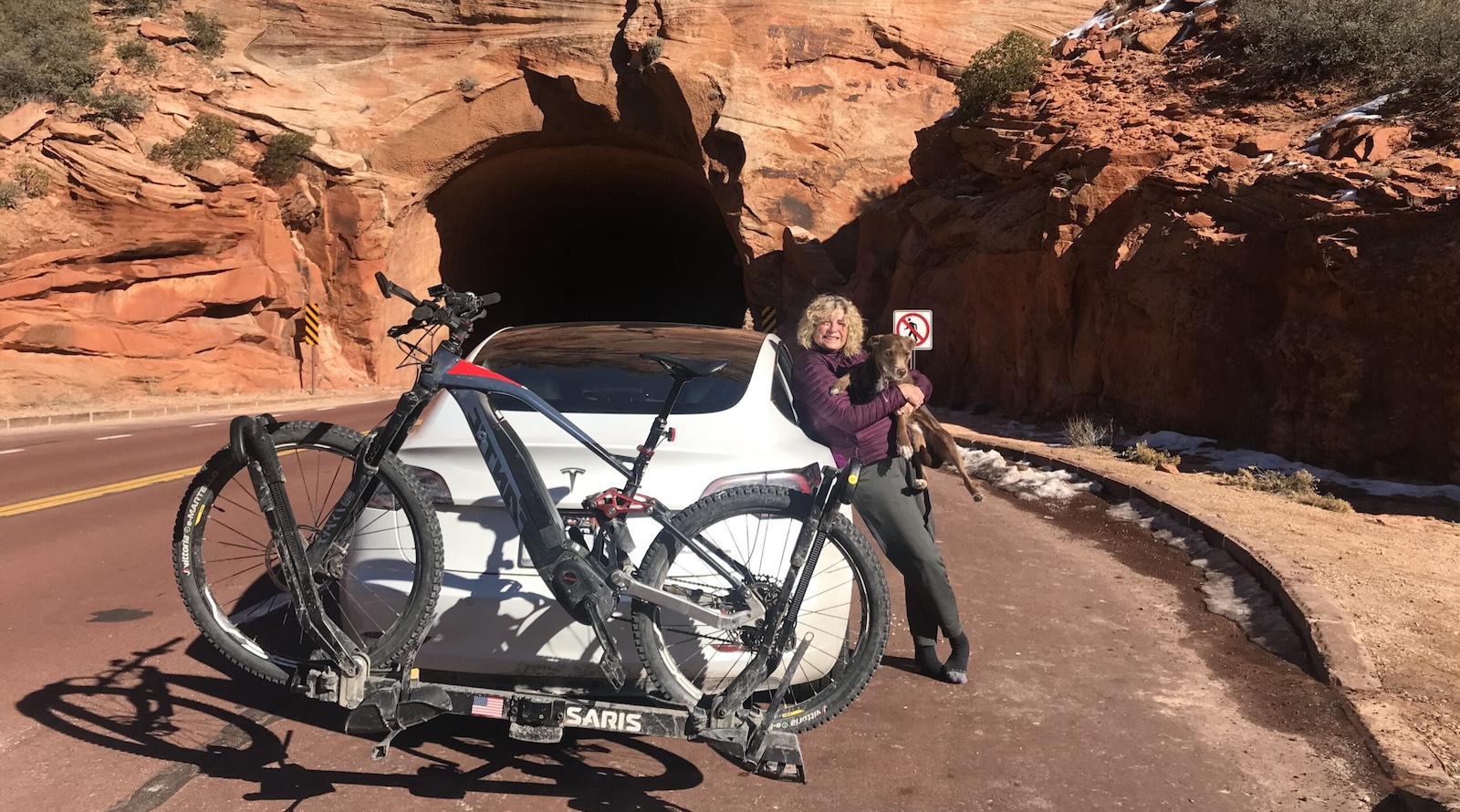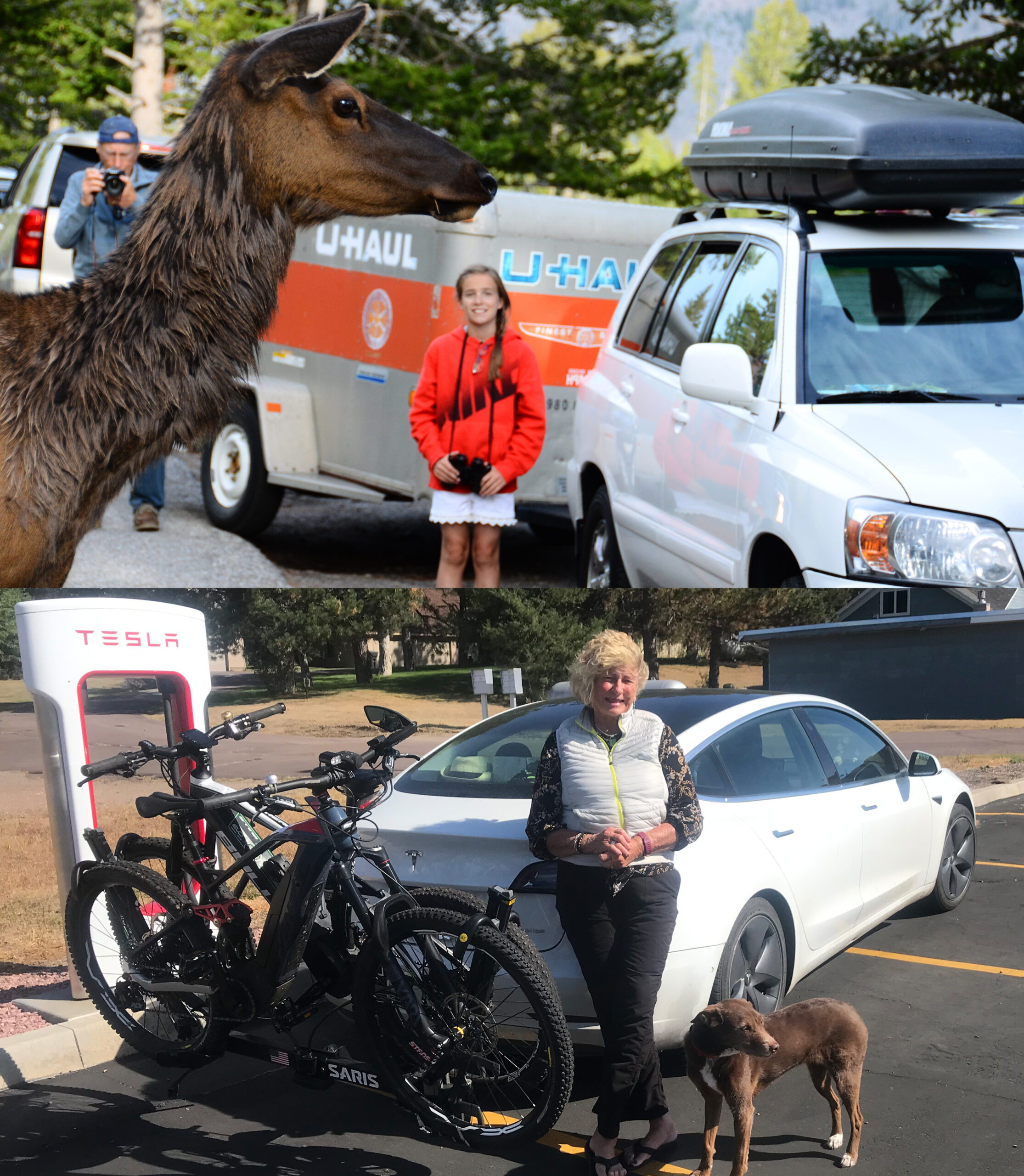Support CleanTechnica’s work through a Substack subscription or on Stripe.

Why do we still love our 2019 Tesla Model 3 after 6 years and over 160,000 miles? Note: my odometer just hit 164,449.
We just finished our annual ~1551-mile fall migration from northern Wisconsin to Utah, mostly via I-80 this time, and Tesla is still the only brand of EVs that can make that trip with very little thought on where to charge. Also, the car accelerates like a jackrabbit, and is just as smooth and quiet.
What have the repairs and service costs been? A big plus: the only two repair/service items besides tires in nearly 3 years has been $112 for the 12-volt battery and $294 to fix a problem with my seatbelts. You may be surprised to hear that most Teslas have a 12-volt lead-acid battery just like a gas car, but in a Tesla, it is needed to boot the electronics when you start the car. Mine needed to be replaced after 5 years just as expected. However, new Teslas use a small, much longer-life lithium-ion battery for this purpose.
The $64,000 question on everyone’s mind about an EV of this age and mileage is: what’s the state of the $15,000 drive battery?
The EPA range of my car was given as 310 miles when new. When your Tesla is charging, you used to be able set the charge limit to 100% and your car gave you a battery range estimate. However, with the latest software update, I have to actually charge to 100% to get the estimate. Mine is reading 250 miles just now. 310 − 250 = 60 miles, 60/310 = ~19% battery loss at 164,595 miles. Is that good? I don’t know. If I am really going to keep the car for another 10 years and 250,000 miles, and if the battery continues to degrade at the same rate, cross-country travel will become more difficult. However, I would be 95 years old then and cross-country travel may be out of the picture.
I now have the range of the 2019 Model 3 Standard Range. It’s still plenty to get from one Supercharger to the next, since they are usually spaced at 100 miles or less. However, with two ebikes on a rack on the back, it’s a stretch when the spacing is 125 miles. I just turned 85, and I can probably make the 1500-mile Utah to Wisconsin trek for another 7 years. If the range continues to drop at the same rate, I will probably have to ditch the bikes. I just bought another bike, so I won’t have to carry them cross-country much longer.
By this method, my range over time:
Odometer/Range/Range Loss
- 164,595/250/19%
- 150,000/261/15%
- 138,856/271/12.5%
- 122,000/280/9.6%
- 112,00/285/8%
- 90,000/278/10%
- 0/310/0% EPA range when new, but I never measured it myself.
It all lines up except the 90,000 miles estimate, which I can’t explain.
That means I have lost 6.5% in the last 25,739 miles. That’s not great. I had hoped that battery degradation would be slowing down at higher mileage. The drive system and battery warranty on my Model 3 ran out at 130,000 miles. Therefore, I am on the hook for anything that goes wrong going forward. I have solar panels on my roof, so when at my Utah home, I’m driving there on sunshine. Driving cross country using Tesla Superchargers, your electricity cost would be similar to driving a gas car. Very fortunately, a number of my readers have used my referral code (see last paragraph), so for the last year, I’ve been getting free charging at Superchargers. However, the heavy EV battery combined with fabulous acceleration causes tires to wear out more quickly than for an ICE vehicle, so that is an increased cost for EV maintenance.
So, according to my latest range test, I should get ~250 miles on a charge. However, when I drive long distances, I am almost always carrying one or two big ebikes on a tray type carrier in back. The bikes destroy the aerodynamic efficiency that Tesla worked so hard to achieve. It’s a stretch for me to go the 125 miles, which is the biggest gap between Superchargers between northern Wisconsin and Utah. I charge just enough to reach the next Supercharger with an estimated arrival charge of 15 to 20%. I don’t like to charge over 80% because the charging above that amount is so slow, 50 kW or less. I set my speed at 75 mph, which is a good rate for long-distance travel while keeping the power use relatively low. I sometimes have to reduce my speed to 70 mph or sometimes even 60 mph to reach the next Supercharger with a comfortable amount of range. I always check the weather by pushing on the temperature display at the top of the screen. This gives me the weather for the day and the wind speed and direction at that moment. However, if I am facing a headwind of 20 mph or more, I have a real problem on the longer runs. In 6 years, I have faced only one time when I had a 50 mph headwind, and I was really worried that I wouldn’t be able to make the next Supercharger. I was able to draft behind a big semi truck by following only 10 feet behind and I made the Supercharger with 4 miles to spare.
Are millions of HW3 owners being left behind?
I’m still on Full Self Driving (FSD) Supervised V12.5.4.
I have the HW3 version of the computer that drives all the functions of my car. It is running spectacular Full Self Driving Supervised V12.5.4, but it hasn’t been updated significantly in several months. I am running V2025.32.6 version of the software, which includes recent bugs and security fixes. However, I am reading about Tesla software releases, including 2025.38, and read that they are going only to those with HW4 computer systems. Many of the updates include 3D visualization improvements that I can understand would require the latest, most powerful computers. However, there are numerous flaws in FSD Supervised that don’t appear to me to be related to the computing power of the onboard computer. I will include some below.
FSD Supervised V12.5.4 will totally drive my car to any location I put in the navigation as well as a good human driver in most circumstances. However, unfortunately, it still screws up occasionally, so you need to be prepared to intervene instantaneously. If we didn’t intervene, on some occasions, we could have been in a serious accident. I’ve had no accidents in the 6 years. I’ve been using FSD for 4.5 years.
I have seen one very recent improvement. My car now follows cars at a distance of 20 ft or so. Recently, it was following at a distance of ~10 ft, which was totally unnerving for me.
FSD has been improved numerous times over the last 4.5 years. For example: 1) It now navigates rotaries properly. 2) It goes around cars and obstacles protruding into your lane. 3) It now responds properly to construction barrels closing a lane of traffic on a 4-lane highway. 4) It usually slows down for speed bumps. 5) New: It passes slower moving cars on 4-lane highways and returns promptly to the right-hand lane. 6) It aggressively changes lanes (recently it squeezed into a lane with not more than ~15 feet of room in front of and behind me. 7) A biggie for northern Wisconsin: FSD Supervised has braked hard a number of times this past summer to avoid hitting a deer crossing the road.
However, some remaining problems: 1) It still ignores 20-mph school zone signs and the double flashing lights. 2) It won’t automatically slow down for the drainage dips we have here in Utah. Hit those at 30 mph and they will take the bottom off your car. 3) Possibly, the most serious problem with FSD Supervised is that it will occasionally get in a lane inconsistent with the navigation at a stop sign or stop light. We are using maps that include every road in the US; why can’t Tesla also include all the lane functions at stop signs and stop lights? All of us have found ourselves in the wrong lane in heavy-traffic situations because you don’t get the lane function information until you see it on the pavement close to the stop sign or stop light. This wouldn’t need to happen to the computer navigation if all the stop sign and stop light lane functions were part of the data base. 4) Another serious problem: FSD Supervised will occasionally miss a turn specified by the navigation.
Ownership costs
Please find below a comprehensive review of my ownership costs. Don’t stop reading before you get to the elephant in the room. You can use this article as a data point on the reliability of Tesla Model 3s and what you can expect one to cost you as time goes on. In my cost estimate, I haven’t included total fuel costs, interest costs, insurance costs, or resale value.
My car is a little beat up at this point. I have a problem cutting corners too tight and have dented the rocker arm panels below the doors on both sides. One side is bad enough that I will probably get it repaired. I love the look of the car’s front facia (bumper) and I never installed the front license plate which would destroy that look. However, that nice nearly flat white surface collects bugs like crazy, especially in moist Wisconsin. It also has some small dings that look like bugs where the paint has chipped. I would have to had installed an ugly front-end bra to avoid those chips. However, a new front facia for $650 would give me a brand-new front surface. I have the standard black vegan leather seats which still look perfect. The car has two USB charging outlets under the front console which are no longer working. Fortunately, it has two in the back of the car which still work, so we plug our phones in there. Also, my steering wheel is pealing a bit. Next time I need to go in for service I will ask for the price to repair or replace it. Another option is a company that did new seat covers for my old Toyota Highlander.
A big plus! Only $406 service expenses in the last 26 months.
Unless you count tires. My tires would have gone another 5,000 miles, but I’m still snow skiing at 85 years of age. Alta gives skiers at 80+ a free ticket each day. However, Little Cottonwood Canyon requires four-wheel drive and decent tires to make it up the hill on snowy days. On November 26, 2024, once again I purchased the most economical set of 4 tires at Big O tires for $644.15. That was my 5th set of tires, getting ~30,000 miles/set. If I hadn’t been facing a snowy canyon road, I could have done 150,000 miles on 4 sets, which would have been 37,500 miles/set. Not great, but if I had bought the Michelin factory tires at $202/tire at Discount Tires, I would have paid $808/set. Maybe I would have gotten enough more mileage out of each set to make that more economical.
I am a huge proponent of green technology, and in particular electric vehicles. I am also a huge Tesla fanboy! Although, Elon Musk is doing his best to drive me away. I still get a big kick out of my Tesla Model 3. Reason #1: The tremendous acceleration. Reason #2: I’ve had “Full Self Driving” now for 5 years. FSD makes my car drive totally automatically, at least in most cases, as described above.
Please see below my maintenance costs. I’ve only had $406 in maintenance costs since my report at 90,000 miles, 70,000 miles ago.
I know that, in principle, EVs are much less complex than cars with internal combustion engines. An internal combustion engine (rebuild cost ~$9,000) is much more complex than an electric motor, and they seldom run over 200,000 miles without the very expensive rebuild or replacement. In addition, ICE cars have very complex transmissions (replacement cost ~$5,000). You also have exhaust and emission control systems, the radiator/cooling system, etc., etc., etc., which EVs do not have.
However, an EV has a very expensive battery. Do I need to be worried about replacing it? I am treating mine with kid gloves and expect it to last more than 10 years and over 500,000 miles. I almost never charge over 80% and at least ¾ of my charging is done at a slower Level 2 charger in my garage. However, I have used Tesla’s fabulous Level 3 Supercharger network often for long cross-country road trips.
In ~164,000 miles, the total cost of the tires and unforced out-of-warranty repairs for my Model 3 have been $5,748.65. I have purchased economy tires, which have worked out just fine. However, I had to pay ~$1,200 for my third set of tires because I had a tire go flat on the freeway and I just barely made it to the nearest tire store. I had no chance to shop for a good deal. Thus, my total cost is more than I expected but probably not more than what I would have paid driving a gas car with costs for repairs, tires, oil changes, emission inspections, brakes, other miscellaneous items, and higher cost for fuel. The big savings will come going forward when the gas car will see those costs repeated, plus timing belt, muffler, exhaust, and emission control system replacement — and eventually transmission and engine rebuild. If I live long enough, I expect to drive my Tesla over 500,000 miles. It is not unrealistic to expect the electric drive system and battery to last that long.

In the image above, we see my wife with our dog Zuni, our Tesla Model 3, and my ebike on back at Zion National Park. We spend a good deal of the winter at our daughter’s home in Saint George, Utah, only 40 miles away.
See my itemized service costs through 160,000 miles below. Except for a new 12V battery at $112, and $294 for a seatbelt issue, I have had no additional service costs since 90,000 miles.
Conveniently, I was able to obtain the dates, mileage, and exact cost of my Tesla repairs from the Tesla app on my phone. Not conveniently, it appears to go back only 2 years. Find below what I paid for unforced issues with my car not covered by the warranty.
- I had to replace the tires five times. The fourth set could have taken me to 150,000 miles. However, with winter approaching, I had to get tires earlier so I didn’t get stuck on my way up the canyon to go skiing. I have paid $578.93 + $565.44 + $1252.23+ $644.15+ $644.15 = $3,040.15 for the five sets of tires.
- I also replaced the cabin air filter for $29.00. The mobile service man didn’t charge for the installation. Also note: the cabin air filter comes as two units. I watched the mobile service man do it and I wouldn’t recommend doing it yourself unless you have the right tools and are very handy with DIY repairs.
- ~April 2020 and April 2021: 4-wheel alignment twice ~ $280.
- November 3, 2021 / 54,131 miles: Reseal right front upper control arm ball joint (Squeaking) $49
- November 3, 2021 / 54,131 miles: 4-wheel alignment $90.75
- July 22, 2022 / 73,149 miles: Remove and replace Superbottle (battery and drive system cooling valve) because the car wouldn’t go over 50 mph $672.75.
- February 2, 2023 / 88,705 miles: I had the mobile service man replace the windshield wipers for $23.00. This was a simple operation which most anyone could do themselves.
- February 20, 2023 / 90,029 miles: Remove and replace PTC/cabin heater (car wouldn’t go into drive). $1,148.00.
- March 2024, I replaced the car’s floor mats. The original cloth floor mat would no longer stay in place by the driver’s left foot. The Velcro was no longer working. I bought a set of rubber floor mats on Amazon for $49. These look much better, clean easier and stay in place. However, they cover the rear trunk well which makes it a little harder to use. Also, there is a slight buckle in one of the mats, but otherwise I’m glad I didn’t pay more.
- Note: Ironically, in spite of all the high tech, my Model 3 has an old fashion 12-volt lead-acid battery that is used to boot the electronics when my car starts up. This battery is supposed to last 4 to 5 years. Mine went out at 5 years for a cost of $112 including installation by Tesla’s mobile repair man on October 21, 2024.
- December 4, 2024 / 138,000 miles: Seatbelt safety issue repair $294.
Repair/Maintenance Cost Summation
- 5 sets of tires: $578,93 + $565.44 + $1252.23+ $644.15 +644.15 = $3,040.15
- 4-wheel alignment x 3: $370.75
- Replace Superbottle (battery and drive system cooling valve): $672.75
- Replace PTC (the cabin heater failure caused the drive system to freeze up): $1,148
- Replace cabin air filter: $29
- Replace windshield wipers: $23
- New floor mats: $49
- New 12V battery: $112
- Seatbelt safety issue: $294
- Getting picky: 4 bottles of windshield wiper fluid at $2.50 each for a total of $10.00
- Total: $5,748.65
Other costs
The annual registration in Utah for my 2019 Tesla Model 3 is $318.25. Part of this is the electric vehicle fee of $188. Utah has levied this fee on EV drivers to make up for the fact that we don’t use gasoline and therefore don’t pay the road use tax. Utah offers a mileage-based fee which saves money for low-mileage cars. Mine is high mileage, so I paid the fixed $188 fee.
The elephant in the room
Last year I checked on the cost of my Bear River insurance policy on my Tesla. In the past, Bear River Insurance was always low cost. I was surprised to learn that I was paying $3,089 per year, but it has gone down lately to $2,319. (Note: I have 4 cars insured by Bear River.) Tesla quoted me $2,632.20 to insure my car, which would not save me anything. Over 6 years, my insurance cost would be nearly $17,000. This dwarfs the ~$5,748 I’ve paid for tires and out of warranty repairs by a large margin. It’s clear that if I thought buying an expensive electric car would be saving me money, I’ve been sadly mistaken. However, since Bear River has just replaced my roof and siding because of hail damage for $30,000 and rebuilt my office for another $15,000 because of a plumbing leak, I’m not anxious to look to change to a different insurance company to try to save money.
Please add your experiences with repairs on your Tesla vehicles in the comments section below.
Referral Program: If you find any of my articles helpful to you and you are buying a new Tesla, please use my referral link: https://ts.la/arthur73734 (be sure to use it when you make your order). If you are buying a new Tesla and use my link, you’ll currently receive $1,000 off the purchase price of a Model S or X or Cybertruck, or 3 months of complimentary FSD with a Model 3 or Y.
Sign up for CleanTechnica’s Weekly Substack for Zach and Scott’s in-depth analyses and high level summaries, sign up for our daily newsletter, and follow us on Google News!
Have a tip for CleanTechnica? Want to advertise? Want to suggest a guest for our CleanTech Talk podcast? Contact us here.
Sign up for our daily newsletter for 15 new cleantech stories a day. Or sign up for our weekly one on top stories of the week if daily is too frequent.
CleanTechnica uses affiliate links. See our policy here.
CleanTechnica’s Comment Policy




